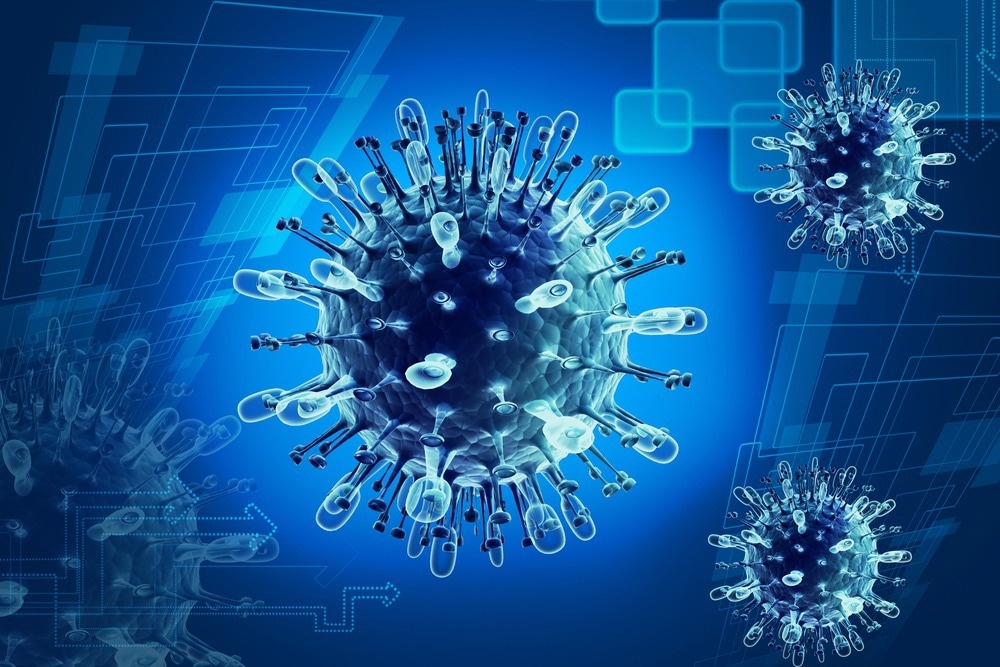How convergent evolution is creating new COVID-19 waves
In a recent study published on the bioRxiv* preprint server, an international team of researchers presented a detailed account of the unique evolutionary trajectory of the severe acute respiratory syndrome coronavirus 2 (SARS-CoV-2), with a focus on its unprecedented scale in the third year of the pandemic.

Study: Convergent evolution in SARS-CoV-2 Spike creates a variant soup that causes new COVID-19 waves. Image Credit: rosedesigns / Shutterstock.com
Background
The evolution of SARS-CoV-2 and its scale and trajectory has no precedence in the history of modern virology. While other viruses, such as the influenza virus, have mutated due to their inherent mutagenicity, massive human intervention has changed the natural course of SARS-CoV-2 evolution.
First, the easing of non-pharmaceutical interventions (NPIs), such as lockdowns, with the waning of vaccine- and infection-induced immunity, created conditions conducive to unperturbed SARS-CoV-2 evolution in 2022. Additionally, the widescale use of therapeutics and global vaccination campaigns changed its natural course beyond expectations in 2022. Thus, in 2022, the world experienced large infection waves and a surge in excess COVID-19-related hospitalizations and deaths, similar to 2020.
Increased SARS-CoV-2 loads in humans, combined with selective pressure due to vaccines and therapeutics targeting the SARS-CoV-2 receptor-binding domain (RBD), have also led to an unprecedented rise in the emergence of new SARS-CoV-2 variants in 2022.
The World Health Organization (WHO) nomenclature system has not designated a new name for any SARS-CoV-2 variant of concern (VOCs) following the emergence of the Omicron variant. However, the alternative nomenclature system, PANGOLIN, has introduced new name(s) for emerging Omicron sublineages.
Intriguingly, all Omicron sublineages that arose in 2022 represent 45% of SARS-CoV-2 mutability. Unfortunately, due to a shortage of funds, global genomic surveillance for SARS-CoV-2 declined by 75% in 2022.
Despite the diverse SARS-CoV-2 strains detected in 2022, these reports may still underestimate SARS-CoV-2 evolution in the ongoing pandemic.
Implications of the convergent SARS-CoV-2 evolution
Between 2020 and 2021, mutations at five amino acid (AA) residues in the SARS-CoV-2 spike (S) protein, including K417, L452, E484, N501, and P681, marked its convergent evolution and gave rise to Alpha, Beta, Gamma, and Delta VOCs.
Genetics & Genomics eBook

Omicron and its sublineages have acquired additional mutations at eight AA residues, including R346, N450, N460, F486, F490, K444, S494, and Q493, all of which have increased their viral fitness. These Omicron subvariants have evolved at an accelerated pace to avert the effect of all anti-S monoclonal antibodies (mAbs), including cilgavimab and bebtelovimab.
All Omicron subvariants with higher RBD immune escape scores relative to their parental strains are more fit than their parental strains. Thus, according to the researchers, any human intervention, such as changing the COVID-19 vaccine formulation, that disturb this ongoing phenomenon will likely reset how SARS-CoV-2 mutates.
Another remarkable aspect of this unique SARS-CoV-2 convergent evolution is the advent of this 'variant soup,' which is stratified based on the number of crucial S mutations.
In the first two years of the COVID-19 pandemic, when there were no or minimal selective pressures, SARS-CoV-2 acquired mutations that increased the stability of the S protein. More recently, several Omicron sublineages, such as BA.4.6.3 and BQ.1.1.10, acquired convergent mutations in the N-terminal domain (NTD).
Despite sharing a common ancestor, BQ.1.18 and BQ.1.1.20 independently acquired Y144del, N460K, L452R, R346T, F486V, and R493Q reverse mutations.
Several Omicron sublineages further mutated those mutations that prior variants had recently acquired, in most cases to fine-tune their angiotensin-converting enzyme 2 (ACE2) binding capability. For example, BA.2.3 has an E484A mutation like its parental strain, BA.2; however, this mutation further evolved into 484G in the descending strain, BA.2.3.20, which increased its ACE2 affinity.
Ironically, mAbs, such as Evusheld™, which is used to treat chronically ill immunocompromised (IC) patients, provided an ideal environment for the advent of SARS-CoV-2 mutants. Accordingly, the researchers examined the increased circulation of Omicron sublineages with S: R346X mutations in countries with high vs. low usage of Evusheld™, such as France and the United Kingdom.
The vast number of Omicron sublineages also served as a natural experiment to study substitution mutations that remained elusive due to their combined incompatibility. The researchers found evidence of SARS-CoV-2 convergent evolution acting on genes other than those encoding its S protein. For example, XBB.1 mutated at open reading frame (ORF)8:G8x, whereas many BA.5.2* sublineages mutated at ORF1b: T1050.
Conclusions
Based on the unpredictable nature of SARS-CoV-2 evolution, for which the researchers could not ascertain a set trajectory, they recommend polyclonal passive immunotherapies, as these treatments appear to be more escape-resistant than mAbs. Likewise, they advocated for future investigations into combination therapies for high-risk populations, such as IC patients.
*Important notice
bioRxiv publishes preliminary scientific reports that are not peer-reviewed and, therefore, should not be regarded as conclusive, guide clinical practice/health-related behavior, or treated as established information.
- Focosi, D., Quiroga, R., McConnel, S. A., et al. (2022). Convergent evolution in SARS-CoV-2 Spike creates a variant soup that causes new COVID-19 waves. bioRxiv. doi:10.1101/2022.12.05.518843. https://www.biorxiv.org/content/10.1101/2022.12.05.518843v1.
Posted in: Genomics | Medical Science News | Medical Research News | Disease/Infection News
Tags: ACE2, Amino Acid, Angiotensin, Angiotensin-Converting Enzyme 2, Antibodies, Coronavirus, Coronavirus Disease COVID-19, Enzyme, Evolution, Genes, Genomic, immunity, Influenza, Mutation, Omicron, Pandemic, Protein, Receptor, Respiratory, SARS, SARS-CoV-2, Severe Acute Respiratory, Severe Acute Respiratory Syndrome, Syndrome, Therapeutics, Vaccine, Virology, Virus

Written by
Neha Mathur
Neha is a digital marketing professional based in Gurugram, India. She has a Master’s degree from the University of Rajasthan with a specialization in Biotechnology in 2008. She has experience in pre-clinical research as part of her research project in The Department of Toxicology at the prestigious Central Drug Research Institute (CDRI), Lucknow, India. She also holds a certification in C++ programming.
Source: Read Full Article
